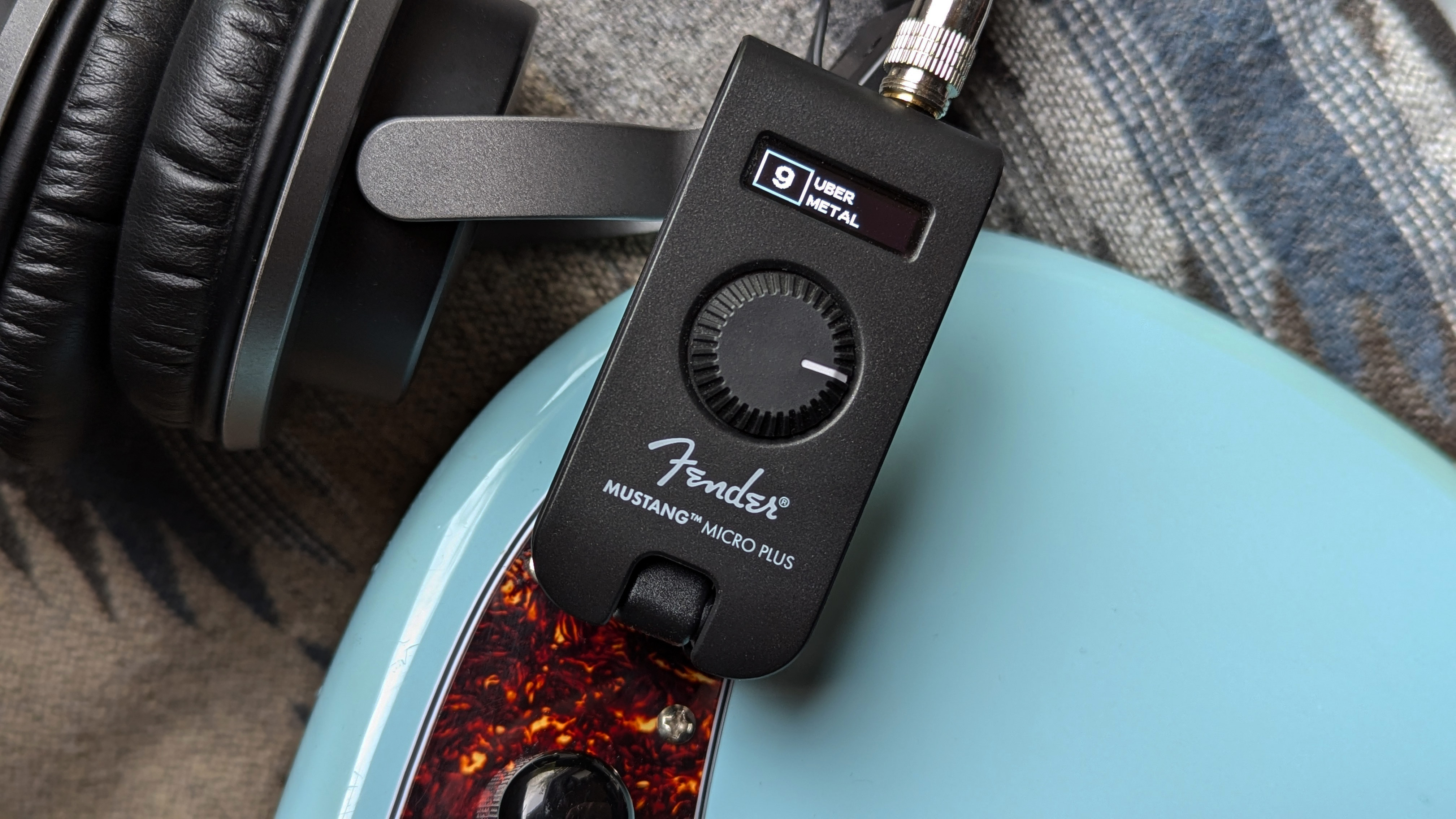MusicRadar Verdict
Fender improves on an already excellent device here with more sounds, and the addition of presets in a headphone amp that proves its worth for playing and home or wherever you and your guitar go.
Pros
- +
More sounds than before in a ultra compact package.
- +
Onboard presets enhance usability.
- +
App allows deeper editing.
Cons
- -
The focus on presets may not please owners of the original
MusicRadar's got your back
Fender Mustang Micro Plus Headphone Amp: What is it?
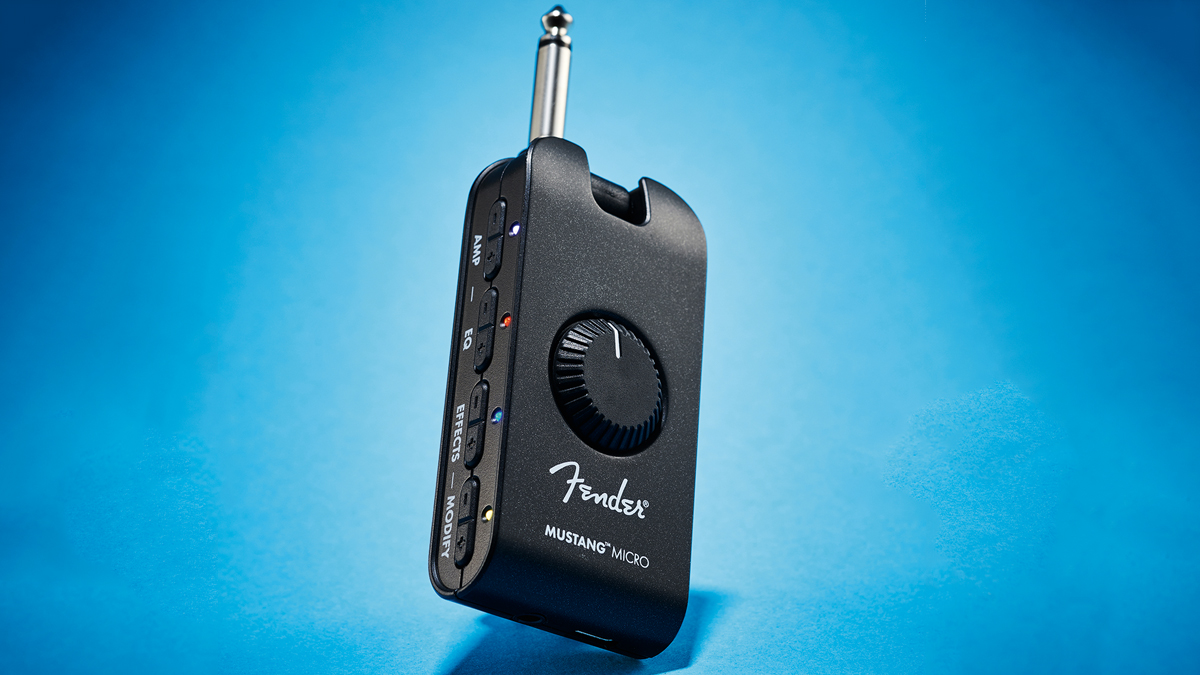
A little over three years ago Fender started very strong with its first headphone modelling amp, the Mustang Micro. Its integrated jack made it easier than ever to plug in and play – with a wide selection of tones, effects and Bluetooth streaming to make playing along to your favourite songs easier than it’s ever been with a guitar amp.
So easy that you may wonder how Fender can improve on it. Challenge accepted, it seems. Because the Fender Micro Plus has packed some additional features into the original’s package. Do they add up to enough to justify the extra outlay, or even an upgrade?
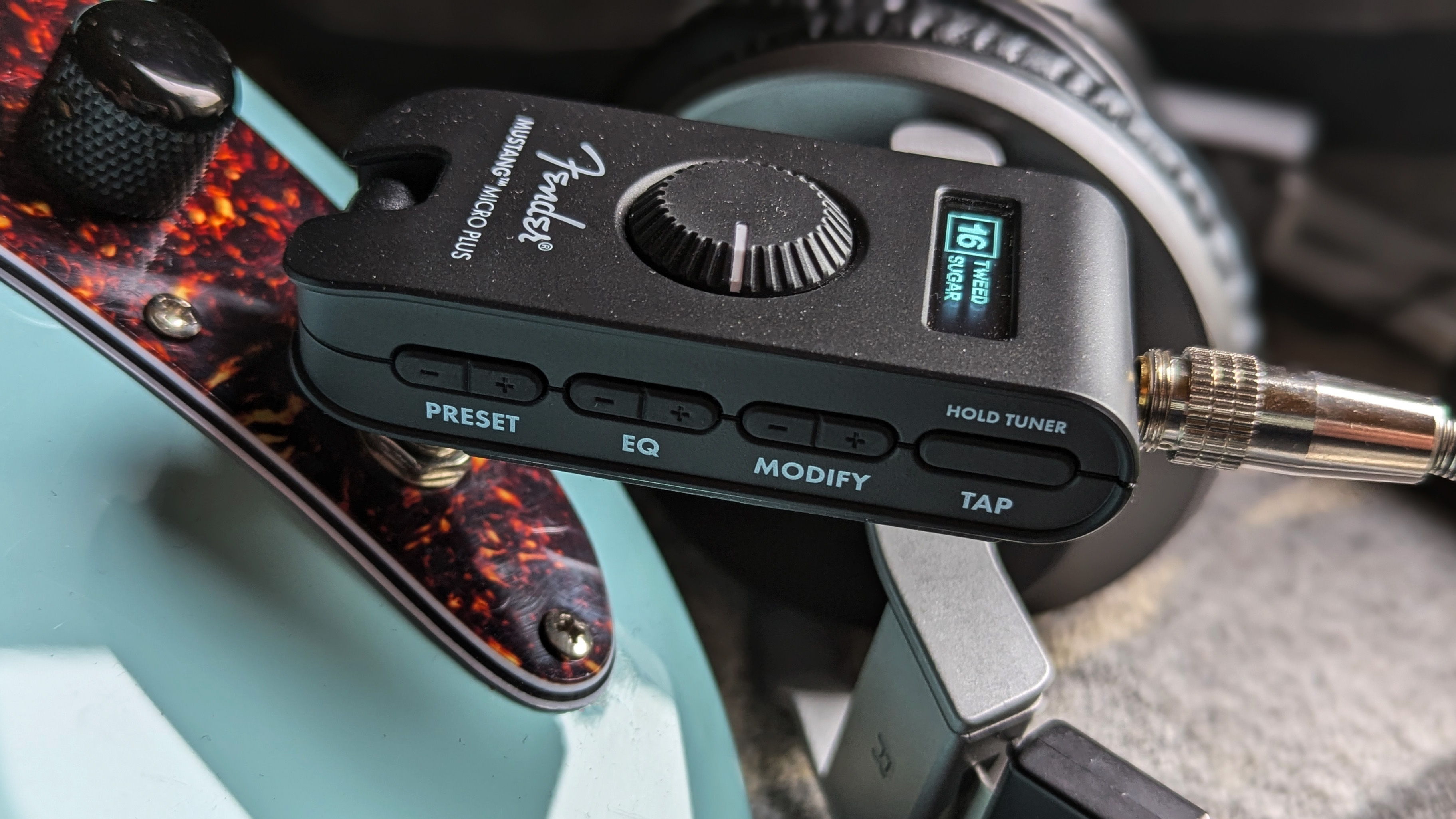
Fender Mustang Micro Plus Headphone Amp: Performance and verdict
The Mustang Micro was $119/£89 when it was first released – less than most overdrive pedals cost these days and a psychological sweet spot for buyers. It was the best-selling amp in its launch year on Reverb because it wasn’t just an ideal beginner’s 'silent' practice amp solution – or even first amp. It was great for any guitarist who wanted to be free of cables and hardware baggage when they wanted to play – wherever that may be.
The Micro Plus is no different in this regard, and its still cheaper than most pedals we review on MusicRadar, but adds a set of features that go way beyond a mere excuse for a soft relaunch. An integrated display now offers you a visual guide where colour coded LEDs did the heavy lifting before. And it wasn’t heavy enough really – I found I frequently needed the guide card that came with the original so I knew what amp and effects model I’d selected. Now it’s clear straight away on a lit screen – well the preset is clear anyway. I'll get to that soon.
That hasn’t affected the best-case running time from the USB-C rechargeable lithium-ion battery; like the original, it’s still four+ hours. That USB connection can still be used for recording too – including into a smartphone when inspiration strikes. But the number of amp models has shot up from 12 to 25 – and the number of effects and combos has more the doubled to 25 too.

With all this choice, presets are now part of the package for the first time; 100 in fact, 70 of which have already been provided by Fender for out of the box to give players a demonstration of the breadth on offer here.
While the hardware offers the same kind of EQ presets like bass and high cut that allowed users to tailor the original to taste, the increase in models require some outside help that the compact unit can’t possibly be expected to provide for. Enter the Fender Tone iOS and Android App that connects with the Mustang Micro from your device via Bluetooth.
Want all the hottest music and gear news, reviews, deals, features and more, direct to your inbox? Sign up here.
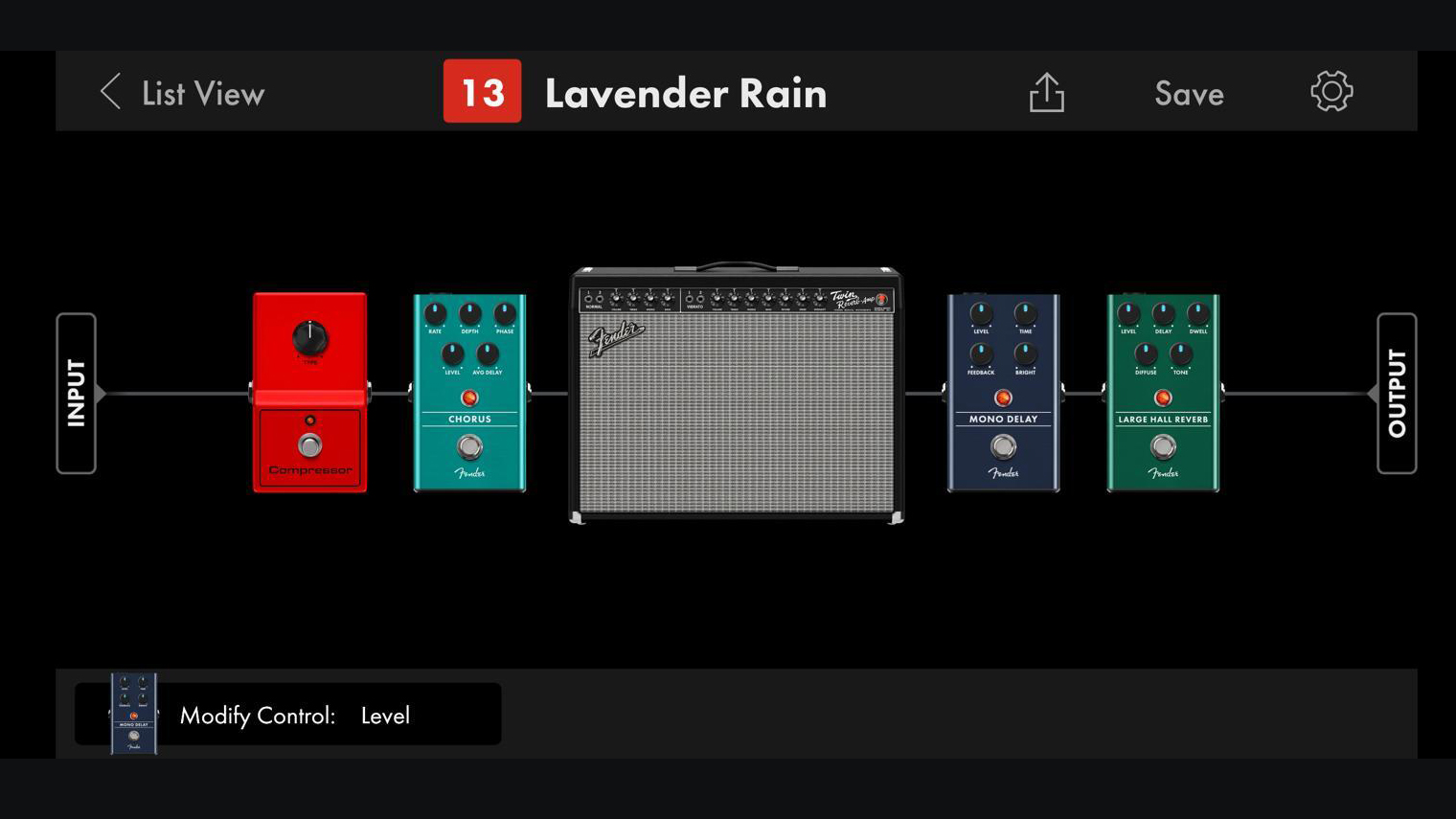
The app gives you control over the parameters of the effects and amps, while also enabling your to ‘audition’ and download presets to your Mustang Micro Plus. Fender has clearly given it plenty of attention from the test version we tried – it looks good (and operates in horizontal mode on your phone to allow maximum screen real estate for your virtual signal chains – and performed smoothly for us.
But it’s not essential to use regularly – you can set and forget your presets or just use the stock ones. But I do think it enhances the experience of using this headphone amp – to give deeper control over your sounds.
This includes choosing what the global Modify control on the hardware itself actually does – from reverb level to modulation rate. If there something you’re likely to tweak on the fly in use, it’s worth making sure it’s catered for here.
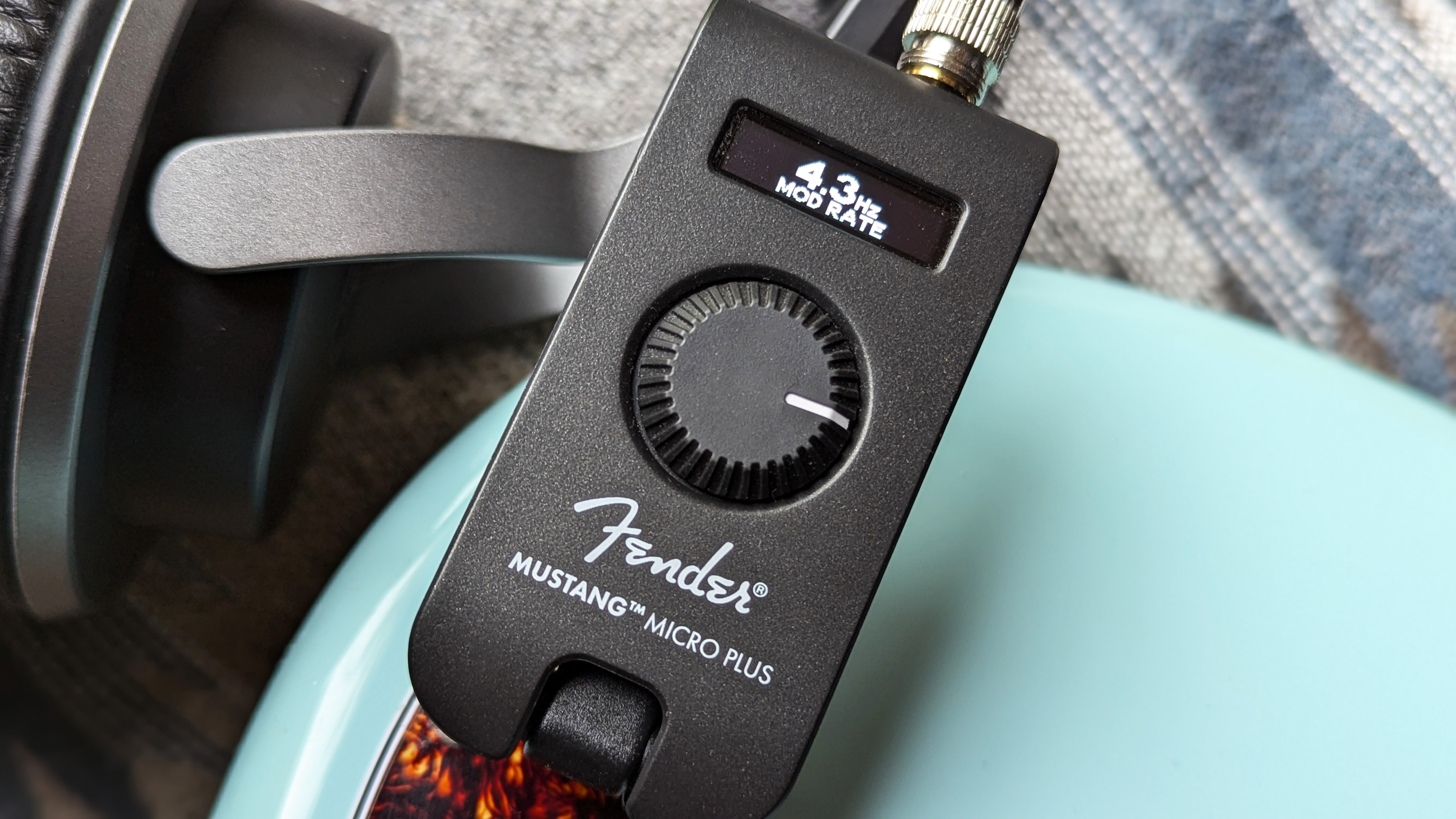
The increase in amp and effects models here is probably the biggest selling point – and I like how Fender has leaned into the headphone output with more stereo effects. But unlike the first Mustang Micro, you can't select an amp and then effects or combinations of them – it's preset-based on the hardware, which may be jarring to existing users as its a very different approach.
You can go into the app and choose the effect you wish to use, but to recall it with the amp model you wish to use, you'll need to save it as a preset or use the app each time. It's a trade-off; but the preset-led approach here really do give you quick access to inspiration, from Jimi Hendrix Uni-Vibe to Sun Records rockabilly slapback, ping-pong U2 delays and my personal favourite, a Fender Twin with chewy tremolo. They sound great on cans, and really immerse you into the Mustang's world.
Fender isn't known for its high-gain thrills – but it also knows that the metal sounds were some of the most popular on the original Mustang Micro, so there's plenty of that fare to be explored. Don't expect Tone Master Pro and Quad Cortex-level detail and response here, but this side of things remains a real strength for a headphone-based mini amplifier. The only caveat is I found some of the high gain models can get pretty hard on the ears in terms of bass definition in low tunings such as C#.
Such instances weren't indicative of the general performance though. I tested the Fender Mustang Micro Plus with both higher end Yamaha studio monitor headphones and some much cheaper earphones with surprisingly powerful drivers I bought from Amazon, and mostly the results were impressive.
It's when quickly tweaking your tone to play along with Bluetooth streamed classic songs, or a backing track, that it really hits home just how much the Mustang Micro Plus can do for such a tiny lightweight device
The Mustang Plus can also go surprisingly loud too - significantly more than the mini amp competition I've encountered. So be careful, fellow rockers!
Like the established Mustang Micro – and indeed the Mustang amp series as a whole – I think the strongest models here are unsurprsingly the ones based on Fender's own amps, such as the Bassman, Deluxe, Princeton and Tweed. These can form solid foundations to tackle a wide range of styles when effects are in the mix too, and usually fit well with the audio that's easily streamed from your phone or laptop via Bluetooth. It's when quickly tweaking your tone to play along with Bluetooth streamed classic songs, or a backing track, that it really hits home just how much the Mustang Micro Plus can do for such a tiny lightweight device. We've never had it so good as guitarists!
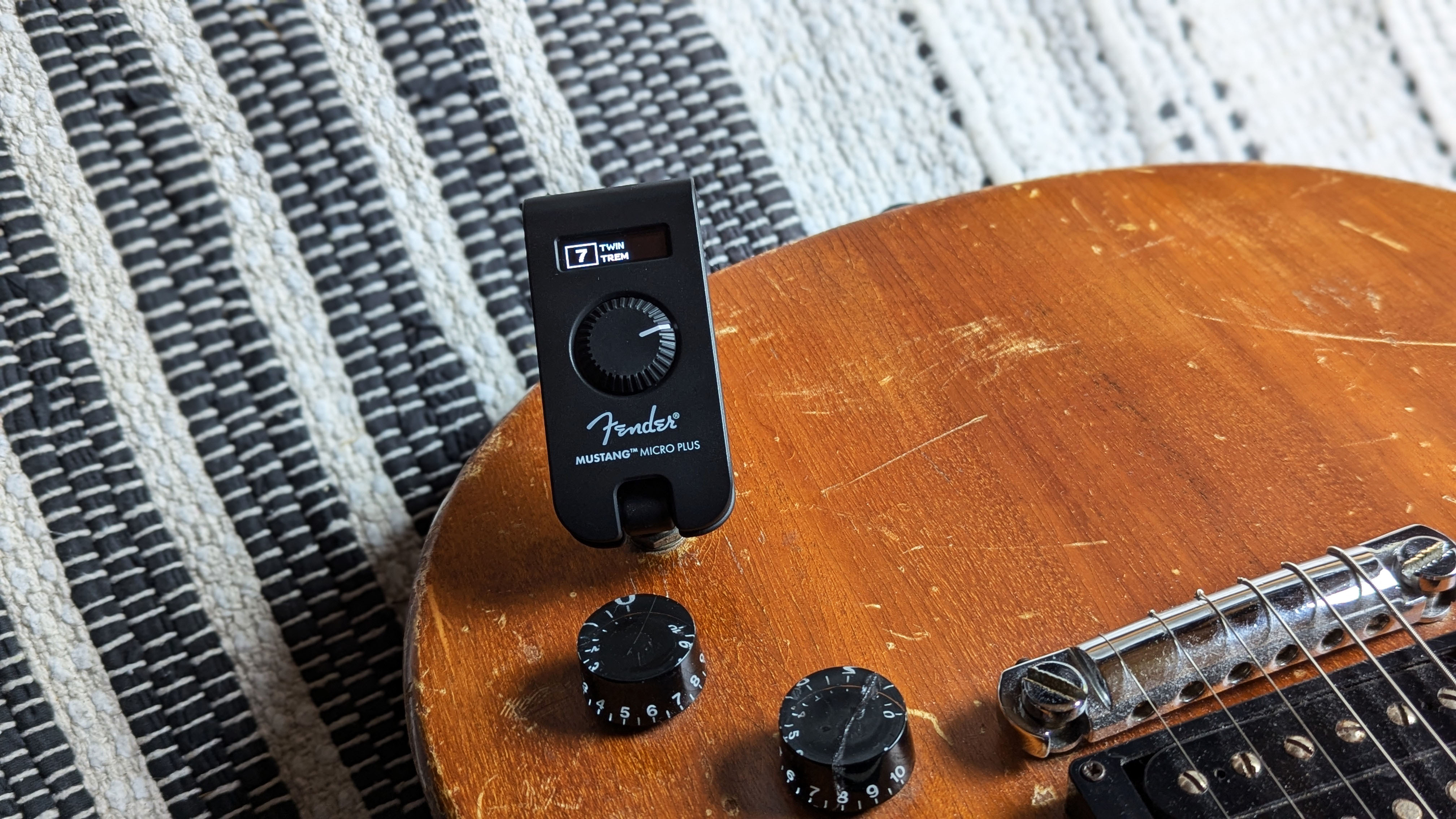
The original Mustang Micro is still going to be available currently for $99/ £105, and our praise of it still stands. But for another $30, the Mustang Micro Plus shows just how much more potential there is to be mined from such a compact device. For this reason I think it's worth the extra money for the added features over the original.
MusicRadar verdict: Fender improves on an already excellent device here with more sounds, and the addition of presets in a headphone amp that proves its worth for playing and home or wherever you and your guitar go.
Fender Mustang Micro Plus Headphone Amp: Hands-on demos
Fender
Andertons
Fender Mustang Micro Plus Headphone Amp: Specifications
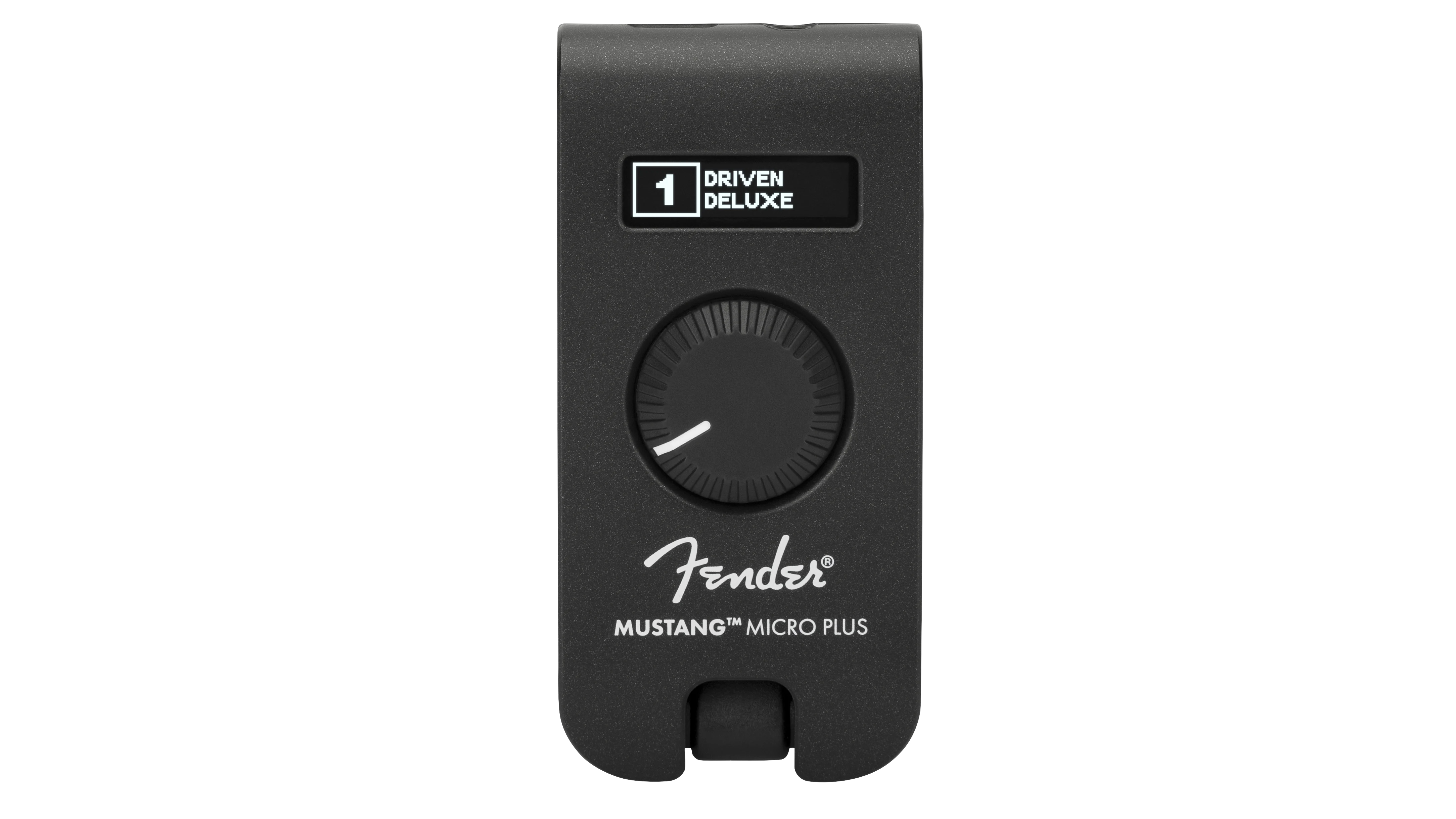
- TYPE: Headphone modelling amp
- CONTROLS: Preset, EQ, modify, tap/tuner, on/off switch, save, volume knob
- FEATURES: Built-in display, Bluetooth streaming, 25 amp models, 25 effects combinations, USB-C direct recording, chromatic tuner, tap-tempo, 100 preset slots, downloadable presets from Fender Tone app
- CONTROLS: Preset, EQ, modify, tap-tempo/tuner, save buttons, on/off switch, volume rotary knob
- CONNECTIONS: 1/8-inch headphones, USB-C
- CONTACT: Fender

Rob is the Reviews Editor for GuitarWorld.com and MusicRadar guitars, so spends most of his waking hours (and beyond) thinking about and trying the latest gear while making sure our reviews team is giving you thorough and honest tests of it. He's worked for guitar mags and sites as a writer and editor for nearly 20 years but still winces at the thought of restringing anything with a Floyd Rose.
